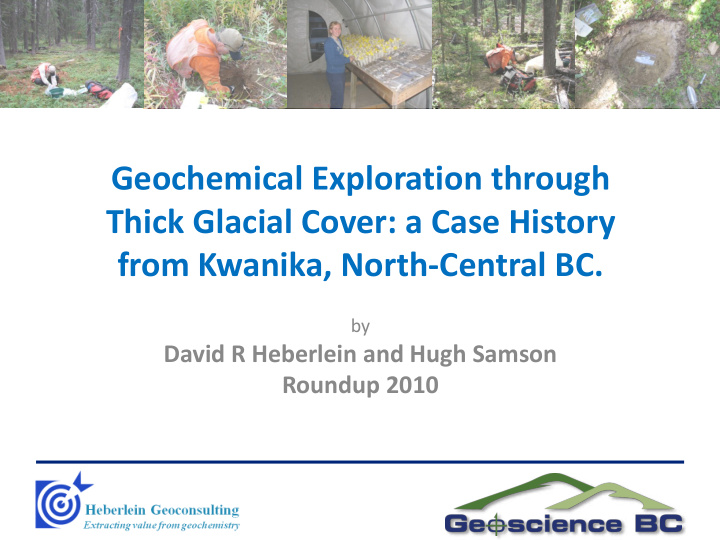



Geochemical Exploration through Thick Glacial Cover: a Case History from Kwanika, North-Central BC. by David R Heberlein and Hugh Samson Roundup 2010
The Challenge Nechako River
The Challenge Deposits Prospects
Why this study? • A clear need to develop geochemical exploration techniques to see through cover. • There is a poor understanding of ‘Deep Penetrating’ Geochemical methods. • Influenced by laboratories who promote their own often proprietary methods. • Relative effectiveness of these methods is poorly understood.
Questions • Can soil geochemistry see through glaciofluvial cover? • Does conventional soil sampling work in this environment? • Is there any benefit to using laboratory specific methods over ‘generic’ techniques? • What is the optimum combination of sample medium and geochemical extraction?
Location Map/Regional Setting Kwanika ^ _ 0 200 400 Km
Property Geology and Targets L E G E N D Gabbro Diorite T1 Granite Quartz Monzonite T2 Monzonite Monzodiorite Andesite Cache Creek Terrane Courtesy of Serengeti Resources Inc.
Survey Area T1 Post-mineral sedimentary basin T2
Cross Section of Transect 2 Courtesy of Serengeti Resources Inc.
Surficial Environment
Soil Profiles
Sampling and analyses Soil Profile Laboratory specific methods
Upper B horizon – Aqua Regia Conventional Soil Sampling N S
Ah Horizon – Aqua Regia
Ah Horizon – Aqua Regia S N
Selective and Partial Extraction results – Copper
Selective and Partial Extraction results – Tungsten
Comparison of methods Very Strong Strong Moderate Weak
Conclusions • Yes. Soil Geochemistry can be used. • No. Conventional soil sampling is ineffective. • No. There is no advantage to using lab specific methods in this environment. • Best response occurs in the Ah horizon. • Aqua regia is the best performing digestion. • Tungsten is a potentially useful pathfinder.
Acknowledgements TSX-V:SIR
Recommend
More recommend